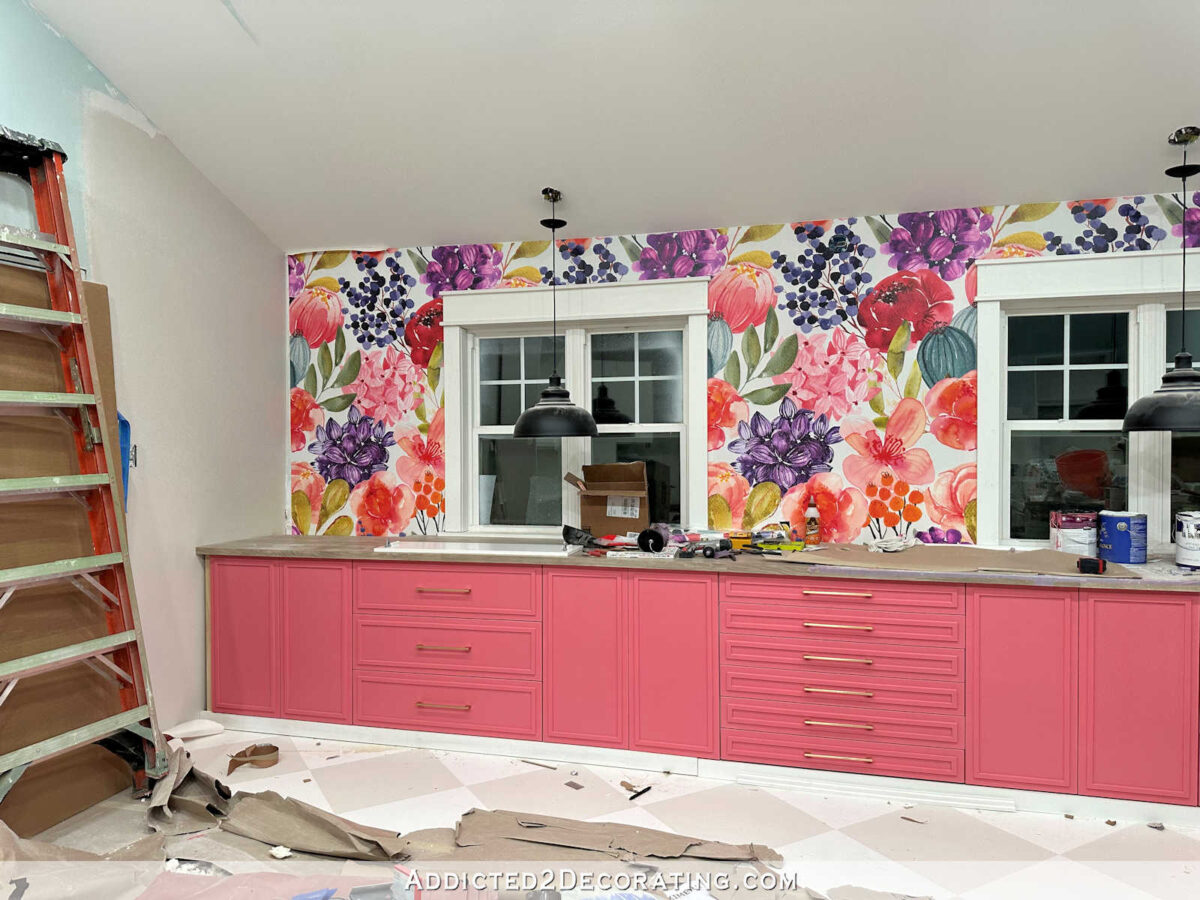
I’ve painted cupboards so many instances in my DIY life that I’ve misplaced depend, however once I determined to make use of IKEA Sektion cupboards in my studio, the considered portray them made me nervous. However I’m so glad I went for it! Whereas I don’t have any part of cupboards fully completed but (the one which’s closest to being completed nonetheless wants a toekick), these cupboards have far exceeded my expectations, not solely in how they operate (I’m a enormous IKEA Sektion fan now!!), but in addition in how they give the impression of being. I completely love my pink studio cupboards.
And because it seems, portray IKEA cupboards isn’t any completely different from portray another cupboards. The method is al the identical, so as soon as I bought previous my preliminary nervousness, the remainder all felt very acquainted to me. So let me present you step-by-step how I did it.
The cupboard doorways and drawer fronts that I ordered are the Veddinge model, that are fully flat on the entrance and the again. When you hold these as is, they’re absolutely the best to color, and all you want is a paint curler. However in fact, I can’t depart nicely sufficient alone, so I made a decision so as to add trim to the fronts of my doorways and drawer fronts, which made the method a bit more difficult and required a sprayer. However I’ll get to all of that in a minute.
Step one was to sand the manufacturing facility end to present the floor some “tooth” for the primer and paint to stay to. I did this utilizing my electrical sander and 100-grit sanding discs. This IKEA manufacturing facility end is hard, and whereas I’d usually begin with 150-grit, I discovered that the powerful IKEA manufacturing facility end required one thing extra abrasive.
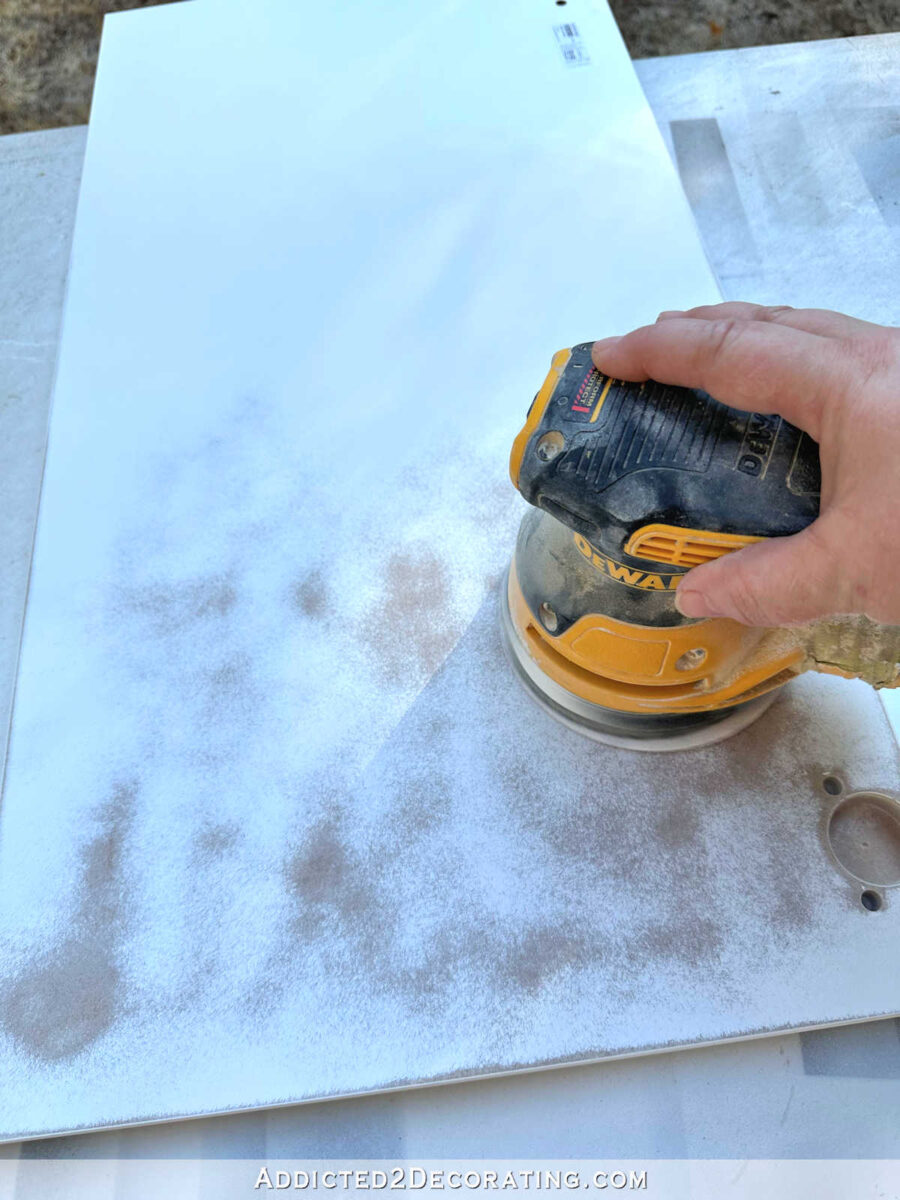
There’s no have to sand the complete end off. The truth is, what you see within the picture above was my very first one to sand, and I sanded it far more than mandatory. The purpose is to take away the tremendous shiny manufacturing facility end, however there’s no have to sand by means of the paint all the way down to the naked materials.
At this level, I hooked up the trim to the fronts. In fact, that is completely elective, and I’d guess that most individuals purchase Veddinge fronts as a result of they need that flat, no frills look.
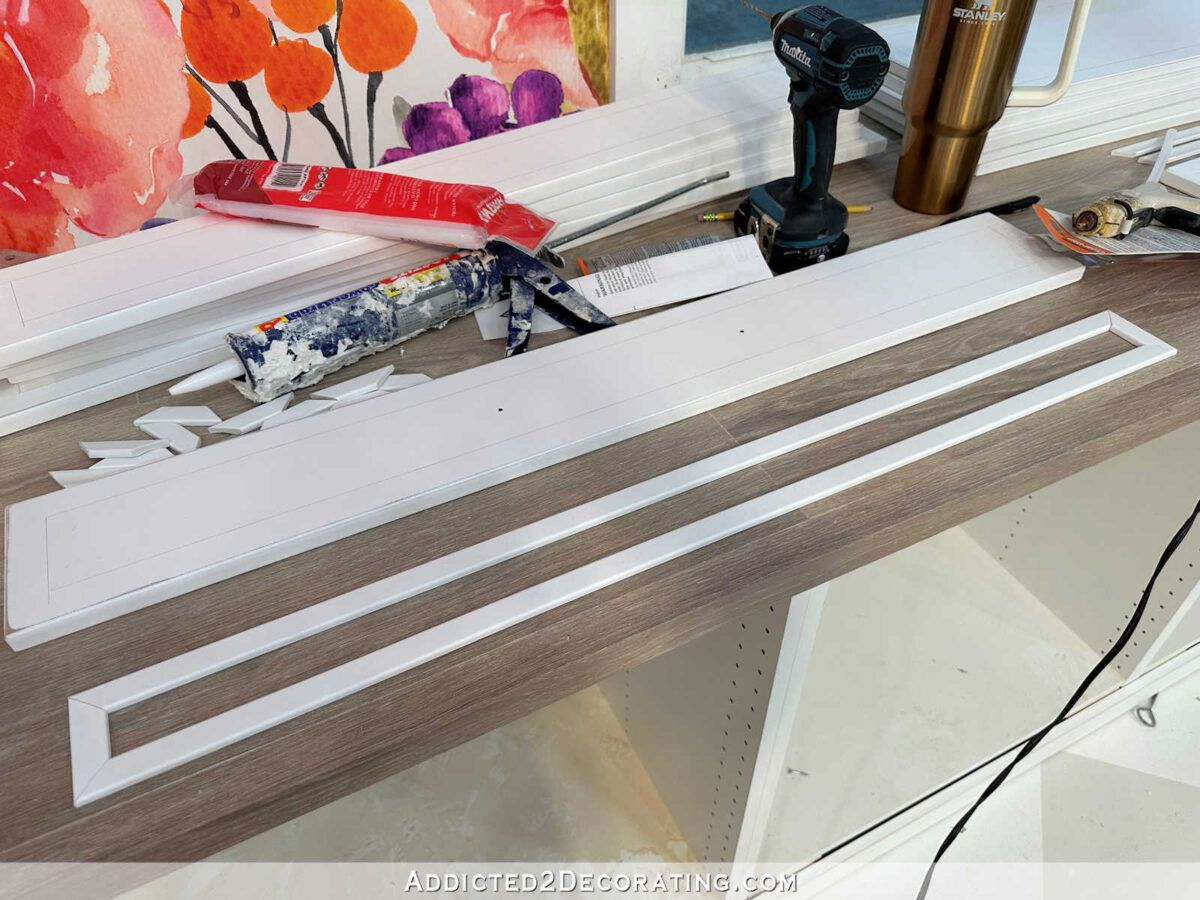
After which I at all times advocate that in the event you’re going so as to add drawer pulls or knobs to the cupboards, drill these holes earlier than portray the cupboards. That means, if any errors are made, they are often mounted with some wooden filler and sanding earlier than you begin priming and portray. There’s nothing extra disheartening than drilling holes for {hardware} on freshly painted cupboard doorways and making a mistake.
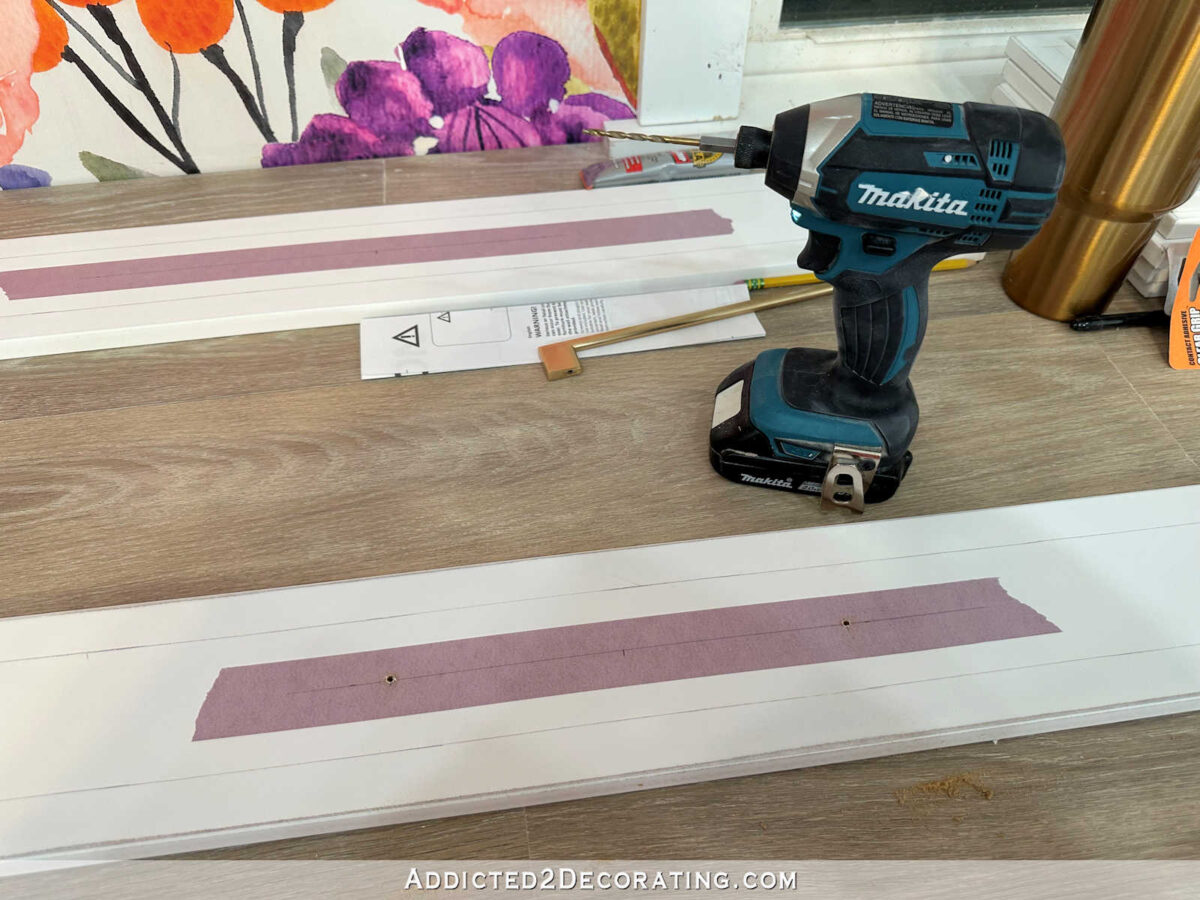
In any case of that, I used to be lastly prepared to start out on the priming. I used Zinsser BIN Shellac-Primarily based Primer. That is nice stuff, and I used it as a result of it’s costly and I occurred to have it available from different initiatives I’ve performed just lately. If I didn’t have this available, I’d have opted for my different favourite Zinsser Oil-Primarily based Cowl Stain primer. Each are implausible merchandise, however the oil-based is about half the value.
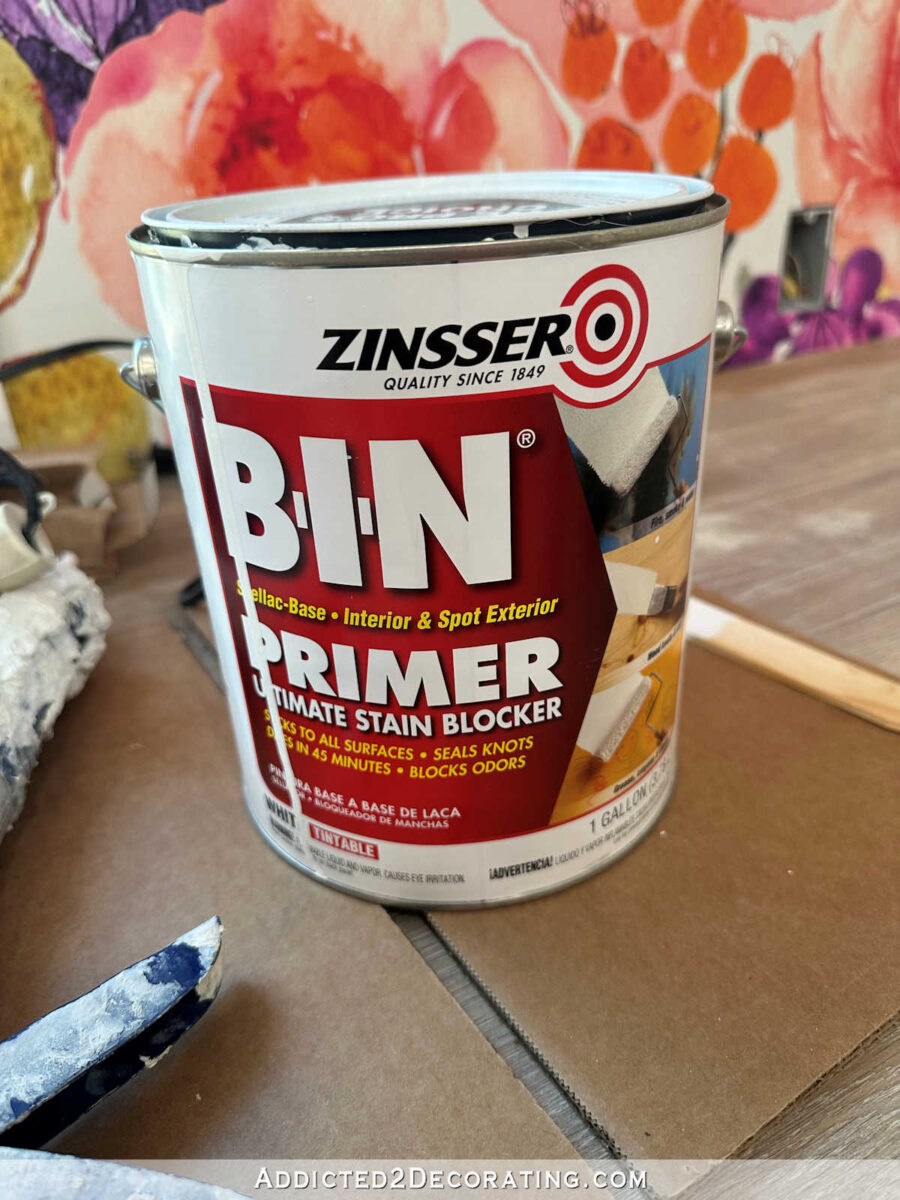
I utilized this to the backs of the doorways and drawer fronts utilizing a 6-inch curler for clean surfaces. Make sure that the label on the curler says “clean surfaces”!
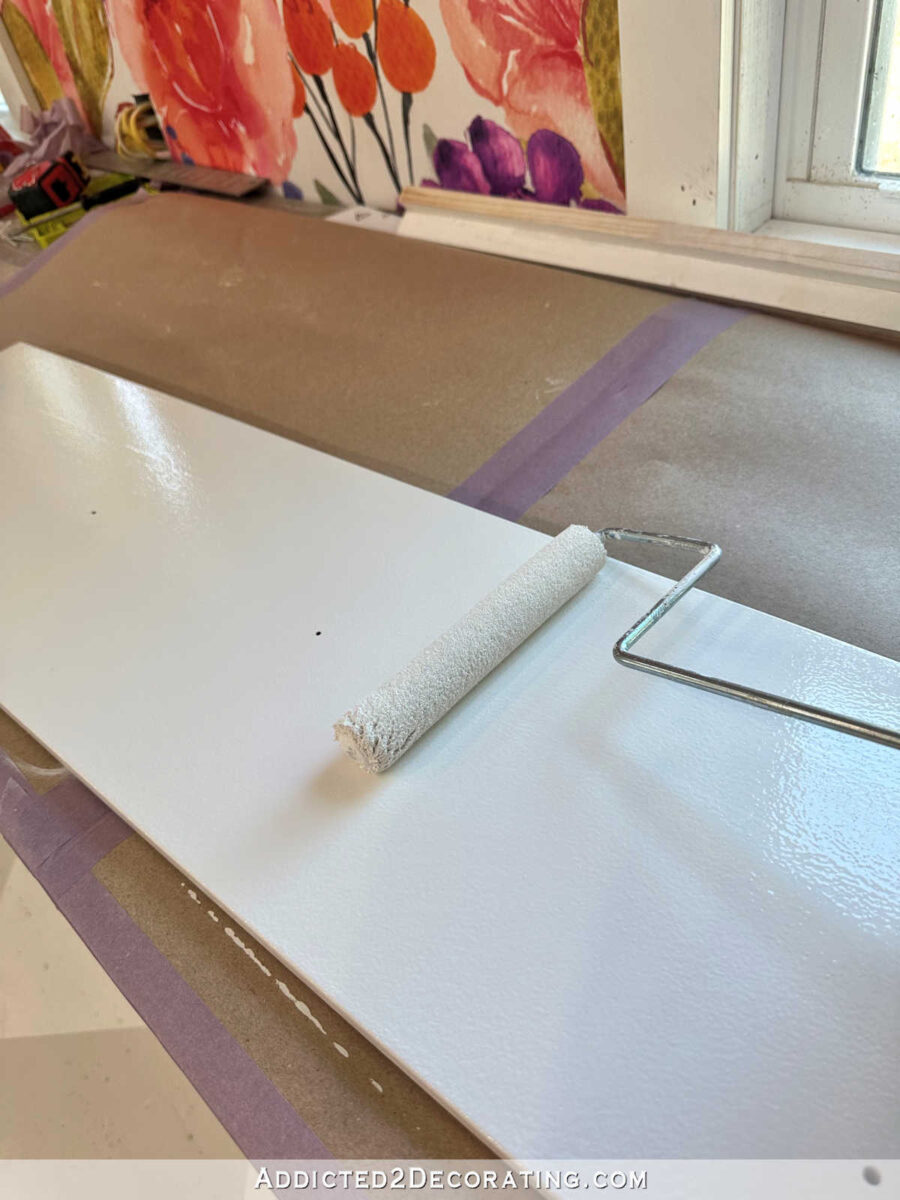
This primer dries fairly shortly to the contact, however I allowed it about two hours of dry time, after which I sanded it with 220-grit sandpaper. This didn’t require a lot work in any respect. This was only a very fast sanding so as to take away any bubbles or imperfections that will have escaped my discover.
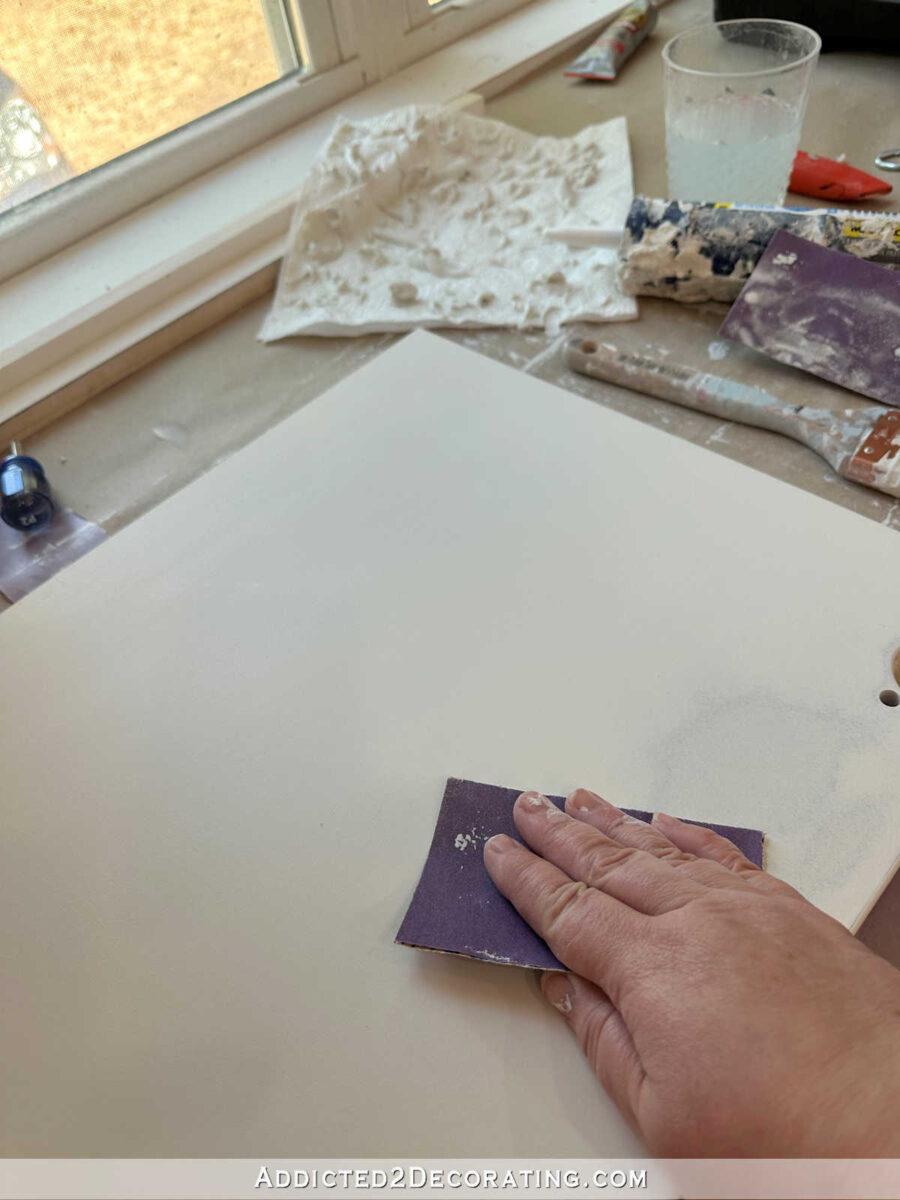
As a result of I made issues troublesome for myself by including the trim to the fronts, I couldn’t use the curler to prime the fronts. As an alternative, I had to make use of my little paint sprayer, which implies that the job needed to be performed outdoors. If I had left the fronts plain, I’d have used a curler to prime the fronts as nicely. After spraying the fronts with primer, I allow them to dry, after which evenly sanded them as nicely.
Subsequent, it was time for paint. I used Behr Premium Plus paint, which is my favourite common objective paint. And so long as I’m planning on utilizing a transparent coat (which I used to be on these cupboards), I additionally really feel comfy utilizing this common objective paint on cupboards. If I weren’t planning on clear coating, I’d have gone with a better high quality paint from both Benjamin Moore or Sherwin Williams made particularly for cupboards, like Benjamin Moore Advance.
However I like a transparent coat end for sturdiness, so I caught with Behr Premium Plus, and I added Floetrol within the quantity specified on the directions. Floetrol helps to remove brush strokes in the event you’re brushing a end, and helps to remove that orange peel impact in the event you’re spraying or rolling a end.
This is the sprayer I use for cabinets and furniture. So beginning with the backs of every door and drawer entrance, I sprayed the primary coat, ensuring to totally cowl the complete factor.
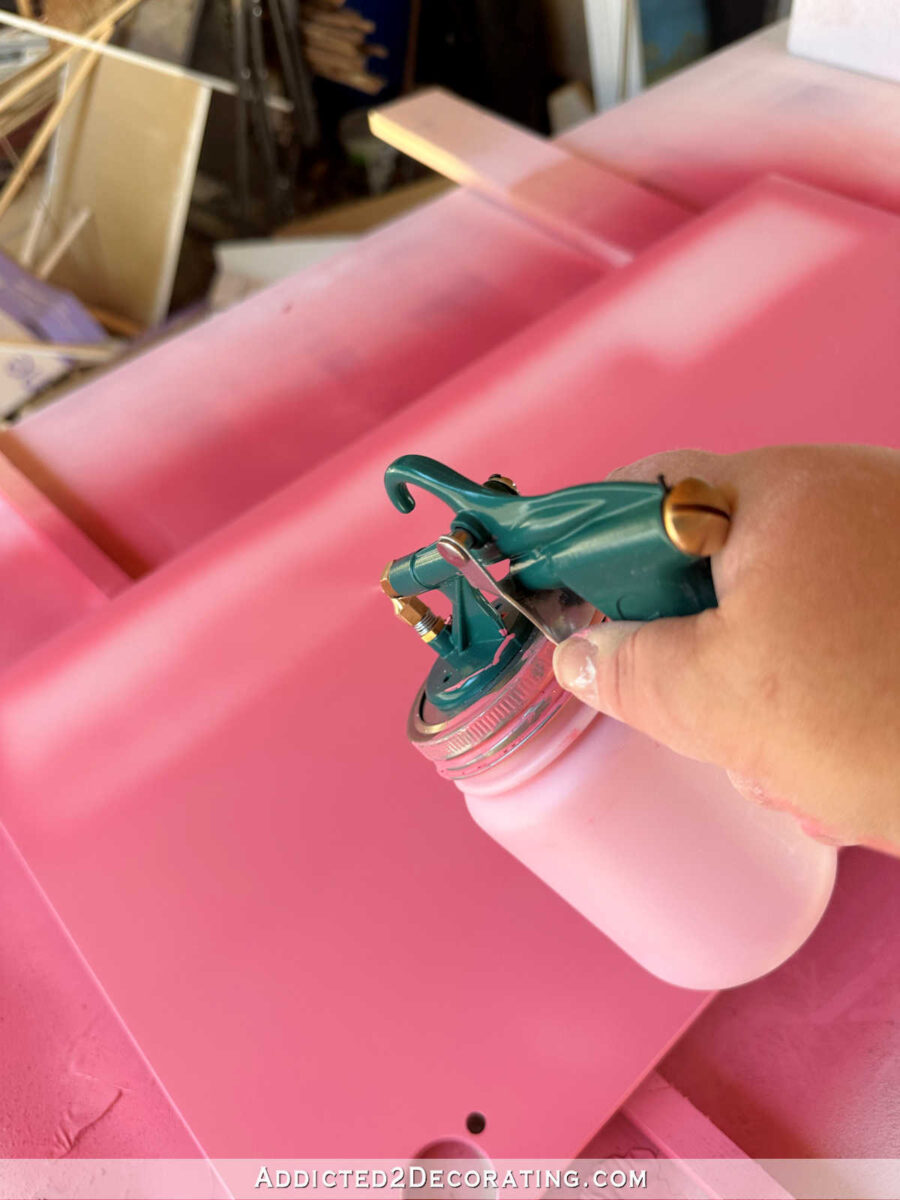
After the primary coat, I gave it a fast sanding with 220-grit sandpaper.
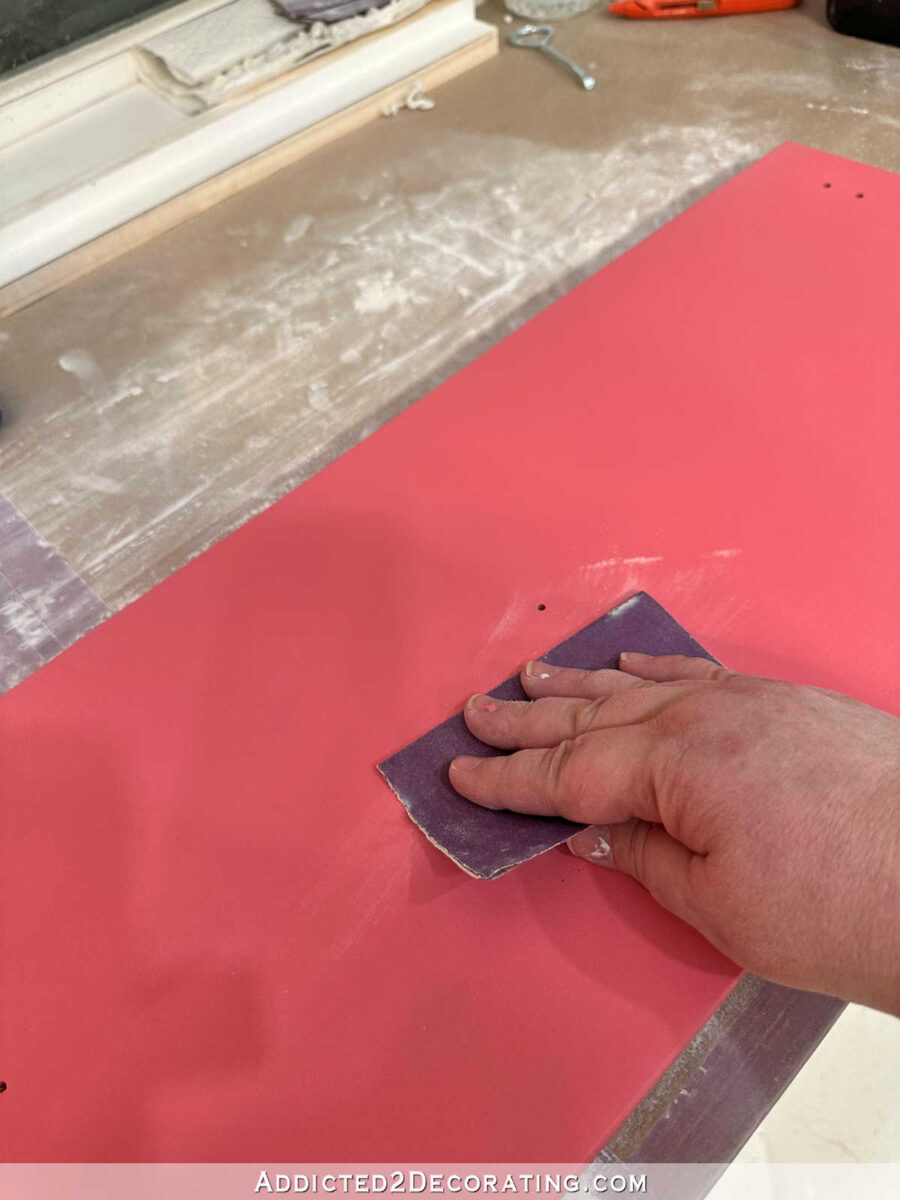
After which I sprayed a second coat of paint on the backs.
I adopted that with two coats of my absolute favourite clear coat — General Finishes High Performance Topcoat in a flat finish. I rolled on the primary coat with a six-inch curler for clean surfaces, and let it dry. The gave it a fast sanding with 400-grit sandpaper, and adopted up with a second coat.

I left these to sit down in a single day to dry earlier than beginning on the fronts.
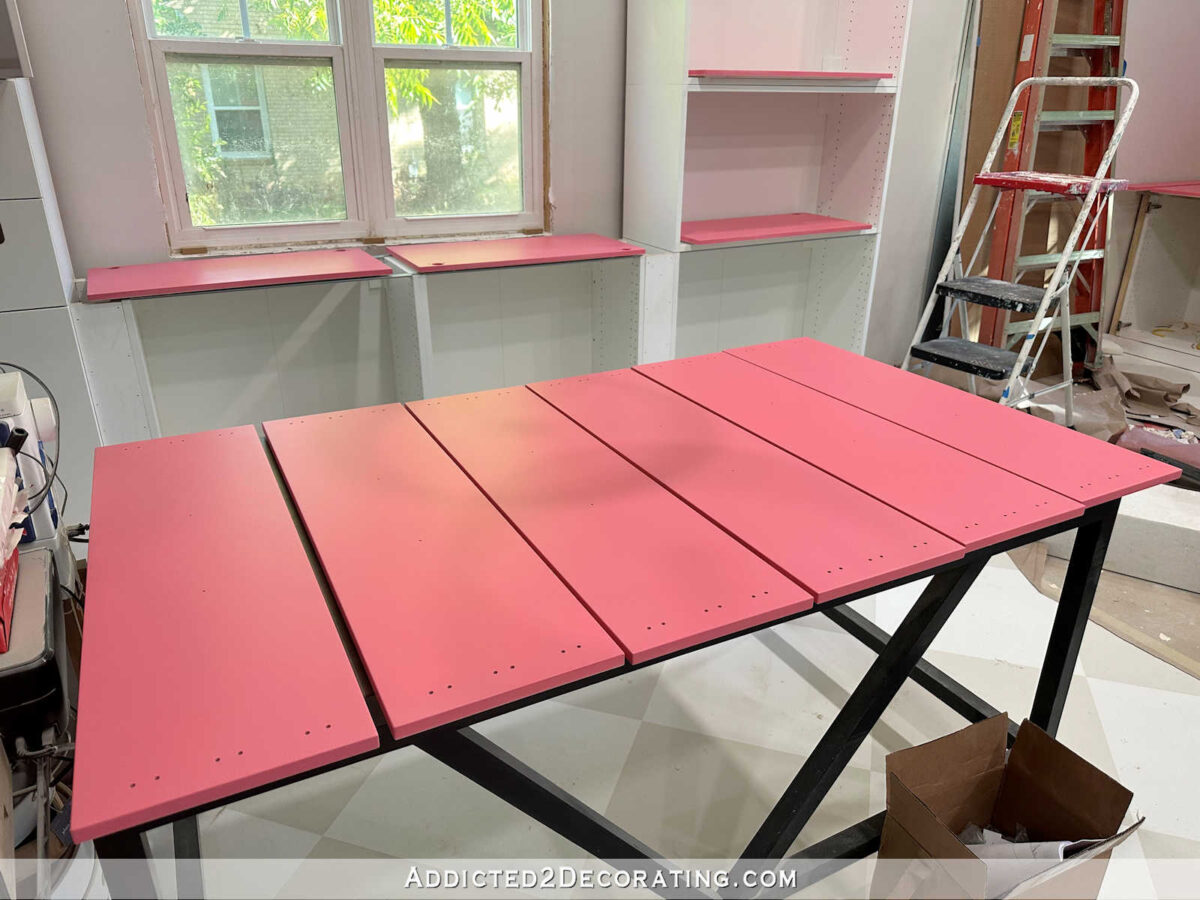
I did the fronts in the identical sequence, beginning with evenly sanding the primer with 150-grit sandpaper.
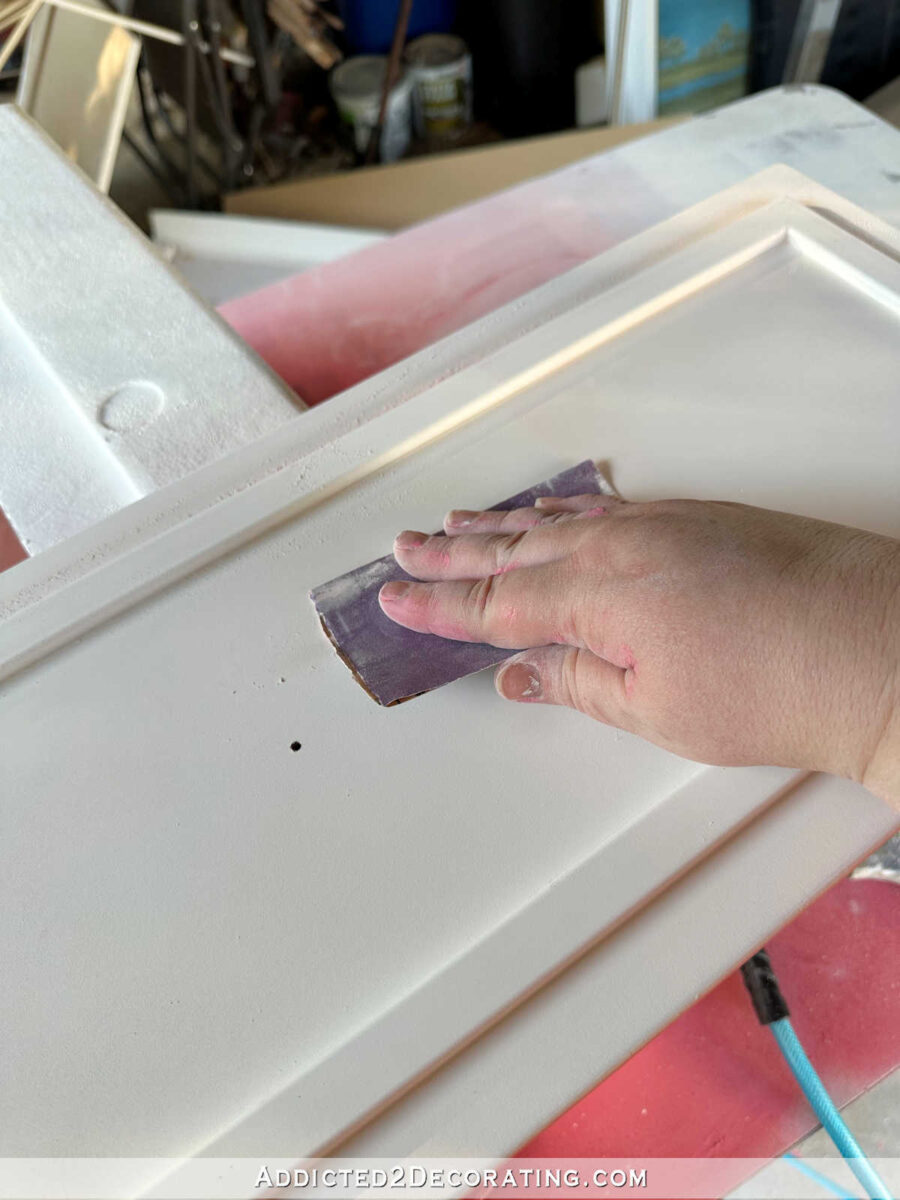
Subsequent, I used my sprayer full of my paint blended with Floetrol, and sprayed the primary coat, let it dry, after which gave it a light-weight sanding with 150-grit sandpaper earlier than spraying a second coat.
When the paint was totally dry (which doesn’t take lengthy in our present 100+ diploma climate), I sprayed the primary coat of clear coat, let it dry, after which very evenly sanded with 400-grit sandpaper earlier than spraying the second and remaining coat of clear end.
When sanding the primary coat of clear end, it’s crucial that you just use a really gentle hand, and keep away from sanding on the corners/edges of the piece. The clear coat end is at all times the thinnest on the corners and edges, and in the event you do a lot sanding in any respect in these areas, it’s virtually assured that you just’ll sand by means of the paint end and must do lots of touchups. I simply keep away from these altogether, and solely sand the flat surfaces.
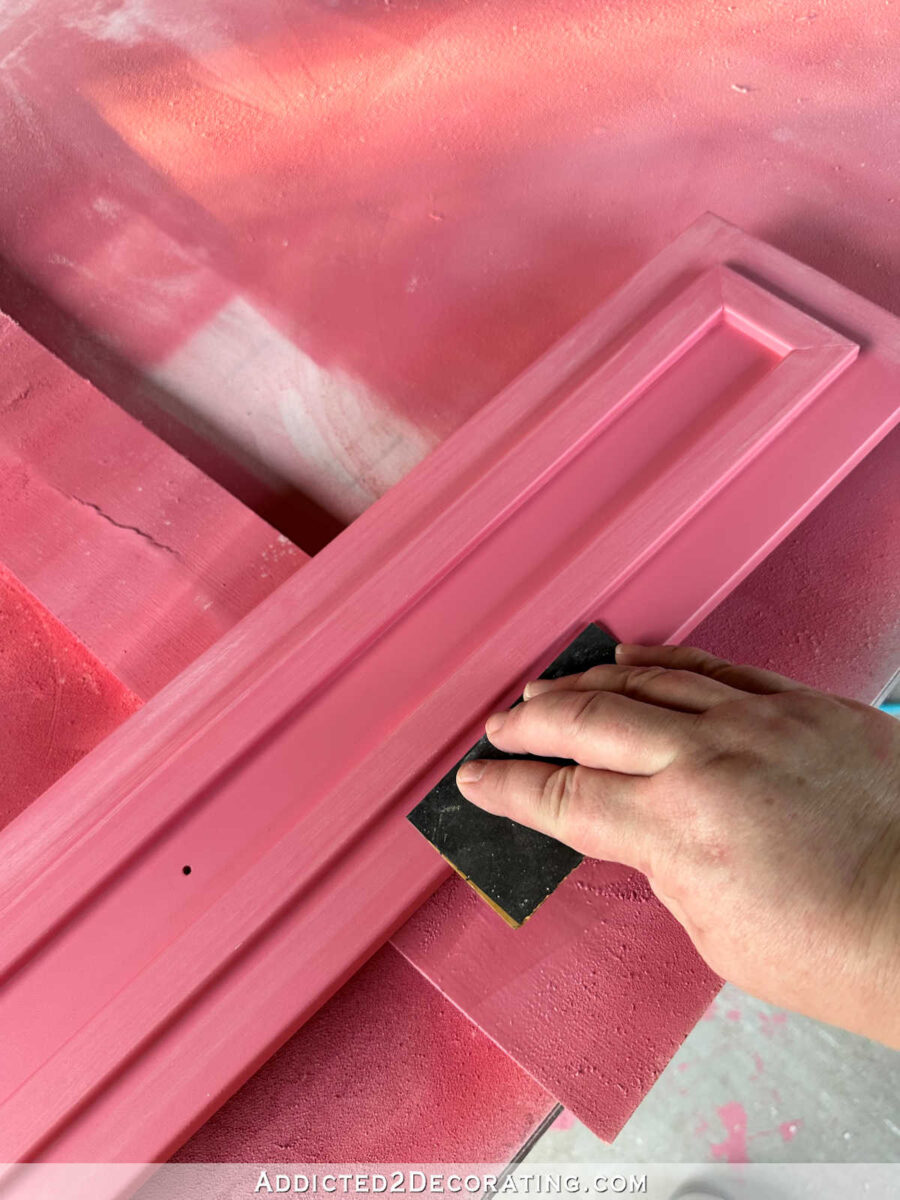
After sanding the primary coat of clear coat, and earlier than spraying the ultimate clear coat (the coat that basically issues), I exploit my air gun attachment on my air compressor to verify the entire sanding particles has been eliminated totally.
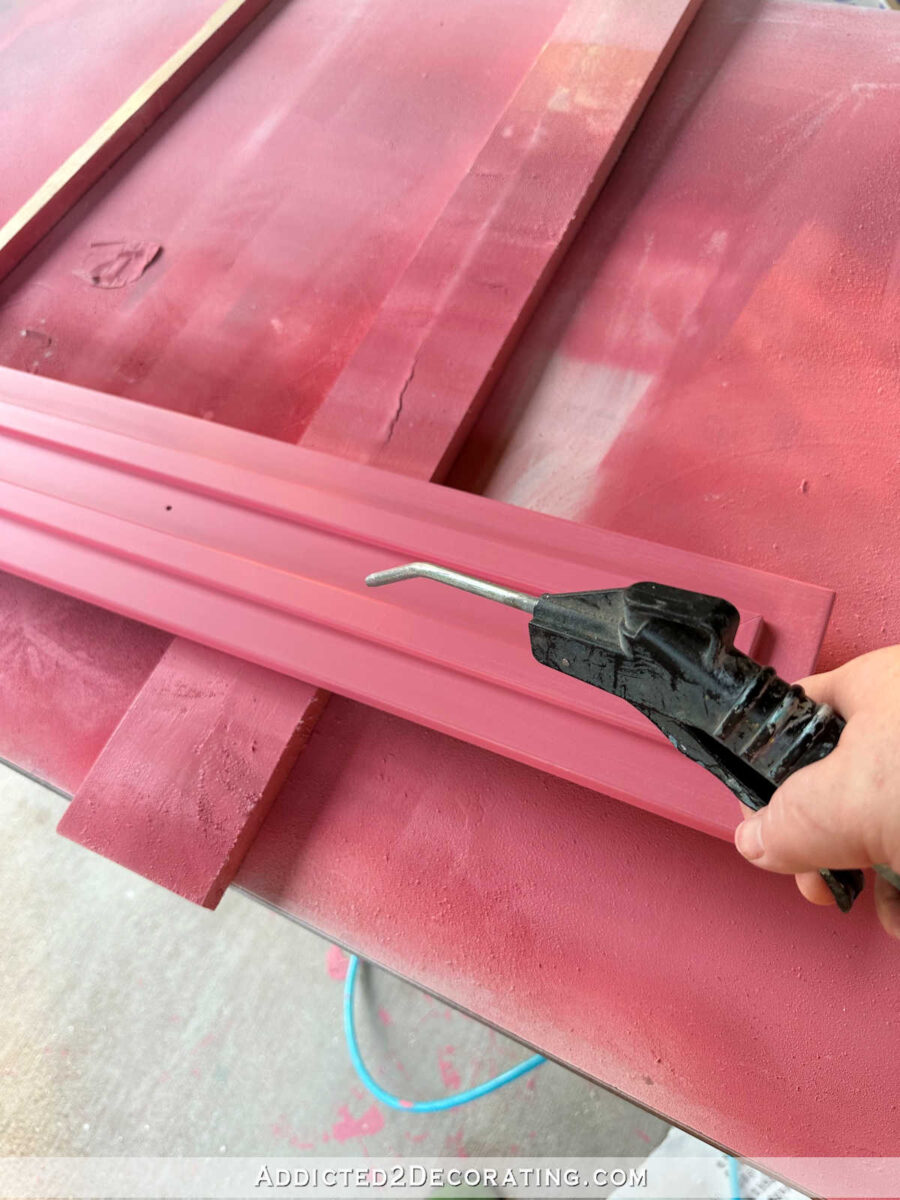
There could also be instances that sanding the primary coat of clear coat might reveal a spot of primer.

In that case, I simply dip my finger into the paint, and dab it onto the spot. It’s also possible to use a really small craft paint brush for this. Simply make certain the touchup paint could be very clean, and let it dry totally earlier than spraying the ultimate clear coat.
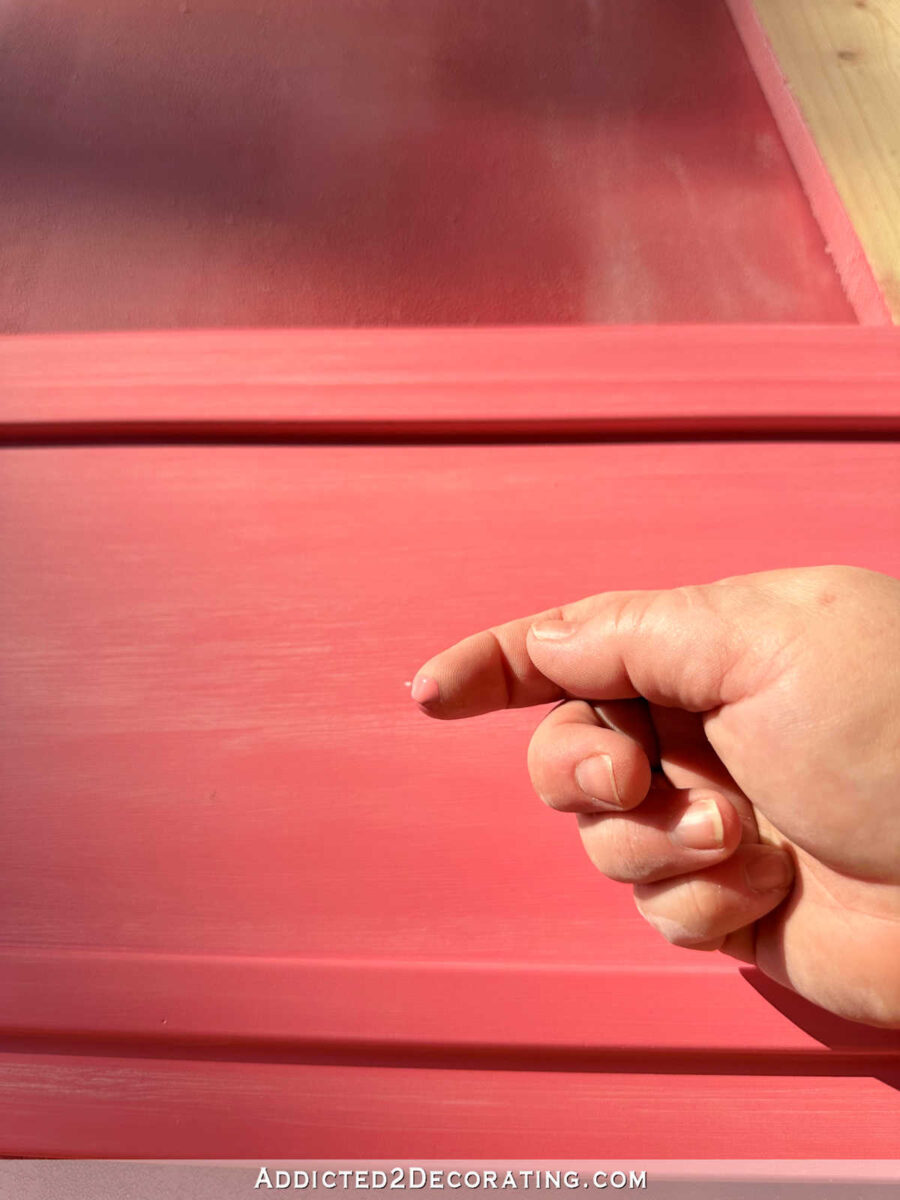
Right here’s what that spot regarded like when it was dry.

Addicted 2 Adorning is the place I share my DIY and adorning journey as I transform and embellish the 1948 fixer higher that my husband, Matt, and I purchased in 2013. Matt has M.S. and is unable to do bodily work, so I do nearly all of the work on the home on my own. You can learn more about me here.







